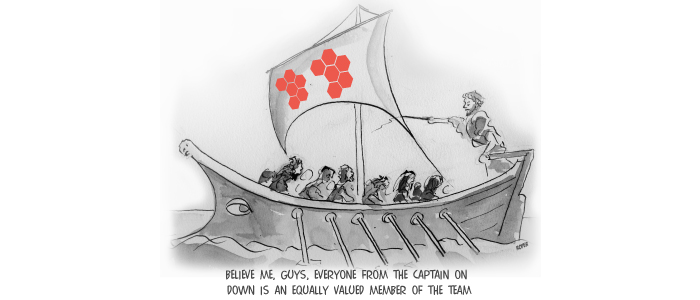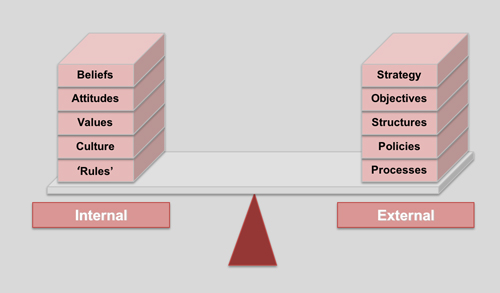High performing teams did not start out that way. A team in its infancy is little more than a group of people working alongside each other, with a vaguely common purpose. The stages in the cycle of team development are often referred to as forming, storming, norming and performing. An accomplished CEO or team leader should be able to identify, and deal with, each stage as it occurs, flexing his leadership style and communication accordingly.
At Leaders Lab we are often asked to get involved (not surprisingly) in the storming phase. Our first task is to reassure the CEO that this is a normal part of a team’s evolution. But his or her challenge is then to ensure that this phase is handled in the most effective way, so that it is short term and doesn’t leave a damaging and lasting legacy. Depending on the skill and emotional intelligence of the team leader, team storming can last an afternoon – or it can last six months.
This phase requires an understanding of what we refer to as the two ends of the management ‘see-saw’ (see below). On the one hand you need to implement the ‘tangible’ elements such as job descriptions, appraisals, reporting lines, one to one meetings and individual accountabilities. If these are neglected then the team will continue to storm. Team members will bump up against each other, not knowing who is responsible for what, whom they should report to, what is expected of them and how they will be rewarded.
Most of our clients are adept at this part. What they don’t always realise is that the other side of management is equally important. The other side of the management seesaw represents the balance of the culture of the team and more widely of the organisation. It is an amalgamation of the unwritten rules, the beliefs, the prejudices and the prevailing attitudes. Unchecked, an organisational culture has a life of its own and it will find its own level.
However, if it is actively managed by a CEO or team leader, then it will be the culture that they have consciously designed. It will be a living manifestation of the organisation’s values, not just a list of bullet points on the laminated charter in Reception. More importantly your organisational culture won’t just engender a ‘great place to work’, it will be the culture that supports a really successful business.
The problem with the ‘intangible’ end of the management seesaw is that it feels both like a black hole and a black art. But there is, in fact, a technology as rigorous as your appraisal and reward system that you can deploy to ensure that you have the right culture to support your business. If you genuinely pay attention and time to getting that right you will have a great culture. And who knows, maybe your team will stop storming by Easter….

